Employee engagement can be defined as a measure of the emotional commitment of employees to the organization and its values, and their willingness to invest – at their own discretion – additional effort to help the organization achieve its goals. Engagement is seen as a long-term social contract between the employees and the organization – a two-way process where the organization commits and cares for the employees, who in turn give commitment and effort back to the organization.
Put simply, engagement will benefit your organization. In fact, hundreds of studies have shown that engaged employees are more productive, deliver better customer service, are more innovative, and are more likely to remain at your organization. With this in mind, most organizations are already doing something about engagement – albeit with varying degrees of success.
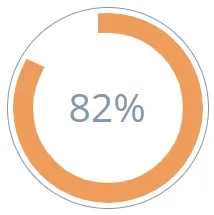
everybody agrees
82% of the 7 000 companies surveyed are already measuring engagement at least once or more per year
Predictions for 2017
Bersin by Deloitte
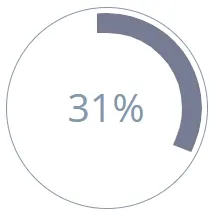
engagement stagnant
Only 31% of U.S & Canadian workers were engaged in their jobs – a figure that has barely budged over a decade
State of the American Workplace
Gallup 2017
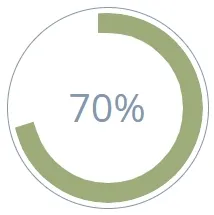
focus on managers
Managers account for at least 70% of the variance in employee engagement scores across business units
Want to Improve Productivity?
Gallup 2018
Engagement 1.0: Setting a Baseline for Engagement
The organizational engagement journey usually starts at what Josh Bersin describes as Engagement 1.0 (link): company-wide annual engagement surveys accompanied by carefully-crafted engagement strategies, action plans and management feedback sessions – which are then followed-up with annual or bi-annual remeasure surveys for comparison and benchmarking purposes.
Mindset’s Flow@Work engagement survey (click here for more) is the perfect tool to help set an engagement baseline at your organization. Flow@Work is specifically designed as a diagnostic engagement survey, and will provide you with an in-depth perspective of the engagement performance-health of your organization. The survey not only measures the results (i.e. whether you have a performance or engagement problem at your organization or not), but it also measures the factors which inhibit or drive those results so you know where to focus and what needs fixing.
Flow@Work – together with the Engage platform – will provide you with both the context and tools to initiate targeted interventions that will have a sustainable impact on performance levels and overall productivity in your organization. Flow@Work and the Engage platform will help you to:
- Focus your Approach – the survey will provide you with insight into the activities and drivers that impact employee engagement and performance at business unit and demographic level at your organization. It will help you to diagnose areas of risk and to isolate performance problems, as well as providing you with a better understanding of what drives talent retention and employee loyalty.
- Set a Benchmark – the survey will enable you to monitor, and track over time, the impact and progress of any changes or interventions that you have instituted. This will make targeted interventions much more effective.
- Quantify the Benefits – by correlating the Flow@Work survey results with other types of business metrics (e.g. customer satisfaction, absenteeism, defects or injury statistics), you will be able to quantify the competitive and financial gains – and ultimately the return on investment – incurred by the engagement interventions undertaken at your organization.
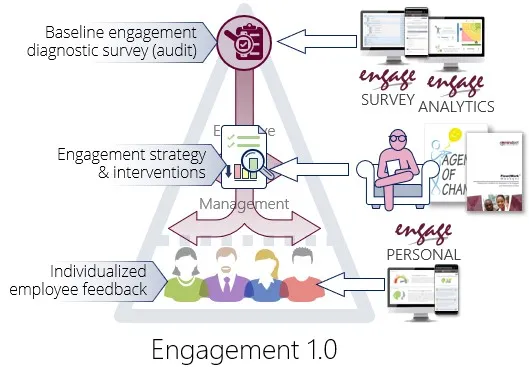
As an added bonus, Engage Personal will provide every member of your organization with the opportunity to take charge of their personal engagement journeys. The system will provide them with personalized feedback and recommendations designed to support them with the information they need to make a difference in their work life. Providing survey respondents with personalized feedback reports will not only incentivize and reward them for taking part in a survey, but will at the same time help to decentralize engagement by making it a talking point at all levels of the organization.
Tracking Engagement as a Psychological State over Time
The question, however, is whether an annual engagement survey is sufficient to really make a sustainable dent in engagement levels, particularly in the dynamic modern organisation where constant change is a given. This is compounded by the fact that engagement is technically a psychological state that employees can be in when they are performing their work roles – a state that is not necessarily stable over time, with employees moving in and out of the state in response to changes in their work environments.
An annual survey is like a snapshot – it asks employees how engaged they feel at that point in time, it does not tell you anything about how often they were engaged over the past few weeks or months. Nor does it tell you anything about how engagement fluctuated at a particular business unit in response to a leadership intervention or a policy change or such. One way to get a more accurate and up-to-date picture of the state of engagement in your organisation would be to use regular pulse or mini surveys to measure and track the levels of engagement on a quarterly or even monthly basis.
Measuring engagement on a more regular basis will provide you with a more accurate and up-to-date picture of the state of engagement in your organisation, and will enable managers to more effectively drive engagement in their business units. The good news is that running a series of pulse surveys in Engage SURVEY is a breeze, particularly if a diagnostic survey has already been conducted so the survey participants and survey model have already been captured. Running a pulse survey is as simple as picking the survey questions and selecting the participants. Pulse surveys that are in addition targeted at specific business units and that measure specific facets or dimensions of engagement and related will help you to track and monitor the impact of engagement interventions at all levels.
Engagement 3.0: The Engaged Organizational Experience
Although annual surveys serve as a good baseline for measuring and comparing engagement levels, moving the engagement needle on a sustainable basis will require a more involved approach that will ultimately result in a change in leadership behavior. For engagement to be sustainable over the long term, it has to be approached strategically, creating an organizational culture and collaborative work environment where employees are genuinely involved, looked after, and cared for. Sustainable engagement, however, also requires employees who have taken ownership of their engagement, and transformational leaders at all levels of the organization who have developed habits of action around ensuring employees are happy, hardworking, and remain committed to the organization.
This is where Mindset’s Engaged Organizational Experience approach comes in. The platform – if used with a credible engagement survey – has been specifically designed by a team of organizational psychologists and data scientists to help organizations embed engagement with the minimum effort as an organizational way-of-life.
|
Level 1: Creating an Engaging Environment |
|
Level 2: Empowering Managers and Leaders |
|
Level 3: Driving |
Mindset’s Engaged Organizational Experience approach will help you to drive and improve engagement on a sustainable basis at all levels of your organization:
- Remeasure engagement surveys – regular follow-up diagnostic engagement surveys, preferably on an annual basis, will serve as a good audit of both the state of engagement in your organization and the efficacy and impact of engagement interventions at all levels of the organization. It will help you to identify areas of concern that need further attention and will at the same time provide you with the opportunity to update your engagement strategy and action plans.
- Individualized feedback – ongoing personalised feedback to all your employees will help to further decentralize and embed engagement by making sure that it remains a talking point at all levels of the organization. It can also serve as the basis for providing employees with contextualized learning content that has been adapted to suit your organizational culture and HR practices.
- Change leadership behavior – empower leaders at all levels with the data-driven insights, tools and know-how so they can take ownership of the engagement levels of their business units or teams. Engage Insight will provide them with data-driven best-practices recommendations of what they need to do to drive engagement in their divisions, departments or teams – based on their most recent survey results. It will also provide them with contextual learning content that can be adapted and aligned with the organizational HR policies and practices. And to close the loop, the efficacy of interventions at business unit level should be followed-up and tracked with targeted pulse surveys.
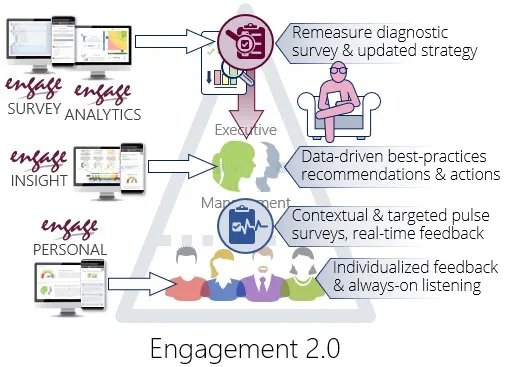
| For more information, click on a sub-menu item at the top of the page⇑ or in the right margin⇒ |

